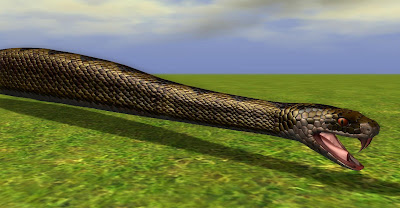Love Is a Many-Headed Thing, Part VIII

Finally, I bring you what this entire series of blog posts has been promising all along – many heads. Below is the five-headed hydra, composed of 5,576 triangles. It isn’t far from my earlier estimate of how many triangles would make it up, and it’s still less than the number of triangles that went into the blue dragon. Still, if two heads are better than one, then surely seven heads are better than five. The seven-headed hydra pictured above is composed of 7,644 triangles, much more than what the blue dragon comprises. Nevertheless, the hydra looks so much more intimidating with an extra pair of fanged mouths that surely two thousand more polygons would be a small price to pay for a boss creature like this. I won’t go beyond seven heads, though. Anything more would have a good view of its own butt. By the way, regarding what I said about this hydra not growing any new heads – I may change my mind about that. We’ll see how it goes.




